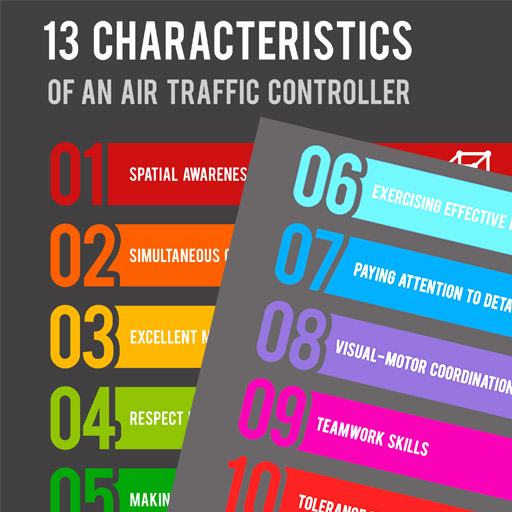Tweet A Stabroek News article that I posted on my Facebook pertaining to ATC recruitment in Guyana sparked a slew of comments, so I write here to inform persons curious about the general requirements of entering the ATC profession. Overview of ATC Air Traffic Controllers (often shortened to ATCOs) ensure the safe and orderly movement […]
A Stabroek News article that I posted on my Facebook pertaining to ATC recruitment in Guyana sparked a slew of comments, so I write here to inform persons curious about the general requirements of entering the ATC profession.
Overview of ATC
Air Traffic Controllers (often shortened to ATCOs) ensure the safe and orderly movement of air traffic through the skies. Hundreds of aircraft pass through any given block of airspace on a daily basis, and it’s the job of ATCOs to maintain their safety and correct position, and manage the flow of aircraft along major air routes. With escalating volumes of air traffic, maximising efficient use of controlled airspace has in recent years become an increasingly important aspect of air traffic control. ATCOs communicate with pilots and instruct them to maintain or alter their height, speed and course, using visual contact, radar, radio and a suite of other communication technologies. Most ATCOs work at Area Control Centres (ACCs) of which there is one in Guyana. The most common role is as an Area Controller with responsibility for regulating air traffic along major routes. Other ATCO roles include Approach Controller, dealing with aircraft movement into and out of the airport and Aerodrome Controller, guiding aircraft through landing and to the terminal, including safe landing, take-off and taxi.
Responsibilities
An Area Controller is responsible for:
- regulating the flow of air traffic and ensuring aircraft keep a safe distance from each other, according to internationally-agreed standards.
- communicating with the pilot and issuing instructions regarding position, height and speed.
- relaying information relating to weather conditions and other factors that might influence the aircraft.
The role of the Approach Controller is to:
- take over pilot contact from the Area Controller once the aircraft is within range of the airport.
- sequence the most efficient order for aircraft to take off or land.
- give the pilot clearance to approach the airport.
The Aerodrome Controller:
- instructs aircraft to take-off or land safely
- monitors aircraft during landing and take-offs
At the largest airports, the role of Aerodrome Controller may be further subdivided into Air Controllers, who monitor the aircraft during landing, and Ground Movement Controllers, who guide the aircraft through the airport to the terminals once it gets on the ground.
Qualifications
Academic
There are no specific subject requirements for graduates wishing to pursue a career as an ATCO. Science and mathematics would be advantageous, however, as these subjects require numeracy, spatial awareness and technical knowledge – key requirements for air traffic control.
A degree is not a prerequisite for the job, as all candidates are required to undergo a rigorous selection procedure and training scheme. The general entry requirements for applicants are:
- Minimum of 5 CXCs at grades 1-3 or GCSEs at grades A-C (including English Language and Mathematics)
- Age 18-30 years
Physical
Air traffic control, while not an especially active career, is a physically demanding area to work in. ATCOs work long hours and must ensure accuracy and clear communication. The following are therefore essential:
- good spatial awareness
- good eyesight and normal colour vision (no colour blindness)
- good hearing
- a clear speaking voice and excellent verbal communication skills
- a high level of general health and fitness
- resilience
There are no other specific entry requirements but it may be worth noting that currently 75% of ATCOs are male. There are no particular barriers for women wanting to join the industry, but it remains a male-dominated field.
Skills
ATCOs have a position of great responsibility and often need to work under pressure. Key skills and qualities include:
- ability to remain calm in high stress/emergency situations
- decisiveness and confident decision-making skills
- a degree of emotional detachment
- ability to make rapid calculations and judgements, including distances and angles
- excellent levels of concentration, not easily distracted
- good teamwork
- excellent organisational skills
- a logical and thorough approach
- capacity to perform simultaneous functions
- excellent memory
- basic common sense (I hasten to point out that sense in not so common)
Working Conditions
Air traffic control if necessary 365 days a year, 24 hours a day, so some unsociable working hours are unavoidable. ATCOs usually work shifts, ideally on two day rotations of Morning, Afternoon and Night shifts, followed by four days off.
Working conditions may involve high levels of stress and require long periods of intense concentration and close computer work. Compulsory breaks are taken periodically, the length and frequency depends on the traffic levels. The annual paid leave entitlement is 6 weeks.
Depending on which country they work and the number of ATC units present, ATCOs may be required to relocate for promotion or due to ATCO shortages in another unit.
Experience
No experience is needed in order to enrol on an ATC training course. The training programme may last 6-18 months, and involves practical and theoretical components. The course is longer for Area Controller trainees and shorter for Aerodrome/Approach Controller trainees. Once trainees have satisfactorily completed the course, they are posted to operational units, where on-the-job training as a trainee air traffic controller is undertaken. This is known as the “validation” period.
Career Progression
Promotion
Air traffic control has a well-defined career structure, with trainees undertaking their two year validation and then progressing to join the qualified ATCO ranks. There is perhaps less age variation than in other industries due to the restrictions on minimum and maximum ages at entry. Note that 80% of ATCOs remain operational controllers for the duration of their career, although there are some opportunities for progression as detailed below.
Roles
Once experienced as an ATCO, potential roles include:
- Training instructor (mentoring and assessing trainee ATCOs)
- Operational watch supervisor (managing fellow ATCOs)
- Non-operational ATCO, outside the ACC or airport, and based at a training college or evaluation centre
- Incident investigator (analysing errors and operational problems)





 I am Wayne, a career air traffic controller. Engage me while I share my thoughts, experience, and news from the aviation world. A post titled "
I am Wayne, a career air traffic controller. Engage me while I share my thoughts, experience, and news from the aviation world. A post titled "





One Response
As usual Wayne, an excellent article. I couldn’t agree with you more. Don’t know how you find the time to do your research, build sites, work and maitnain a family. Keep up the excellent work!!!!